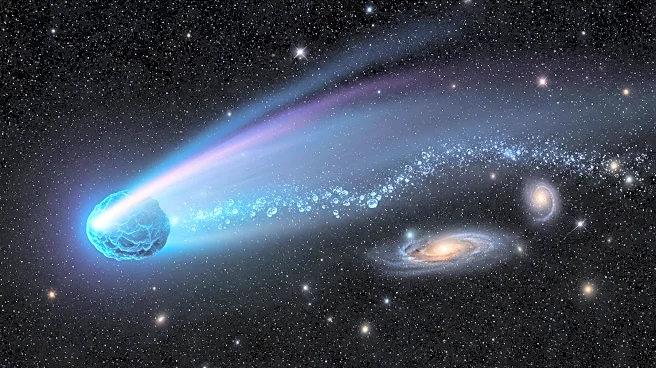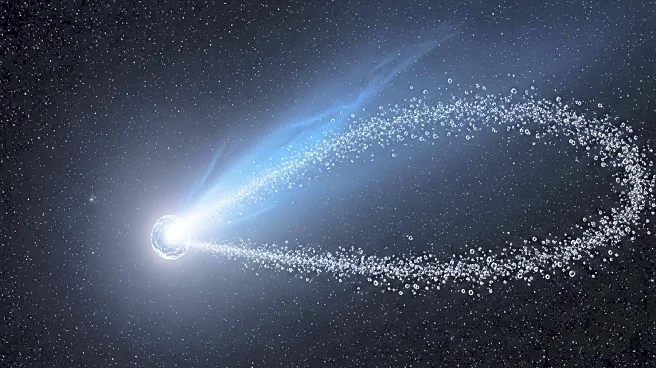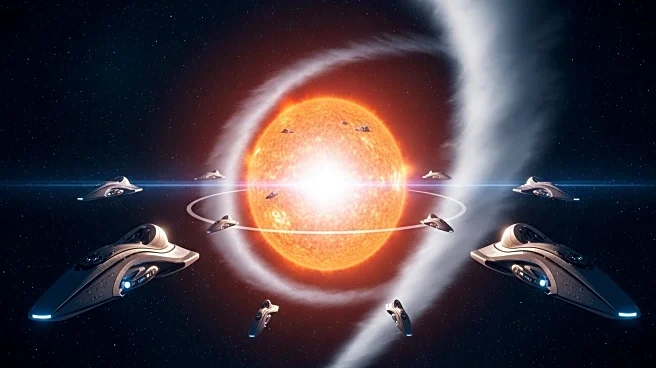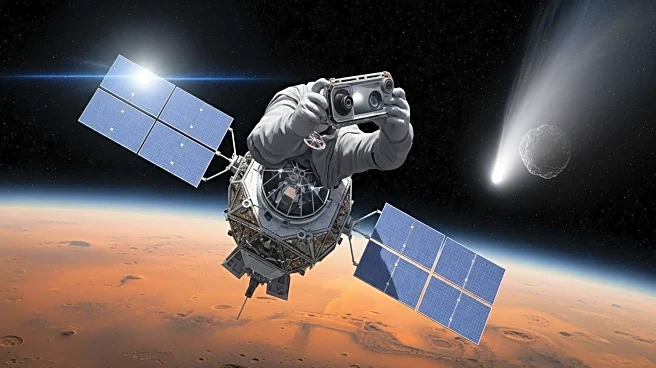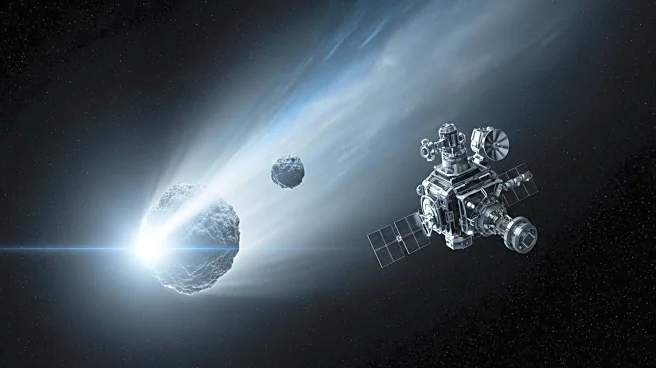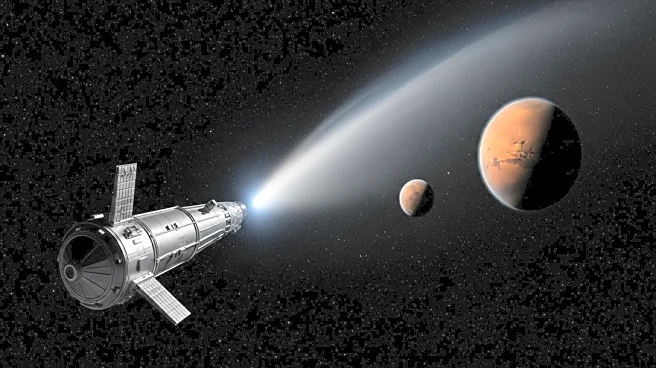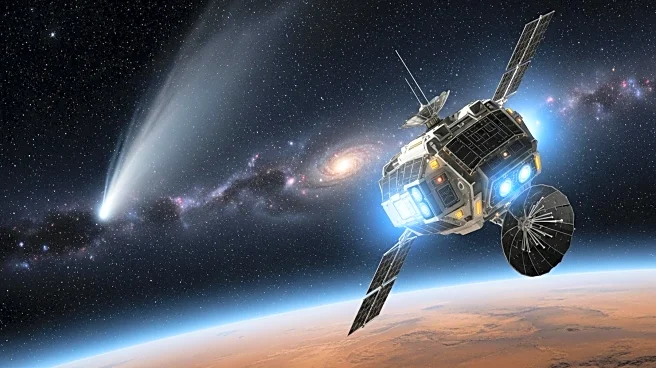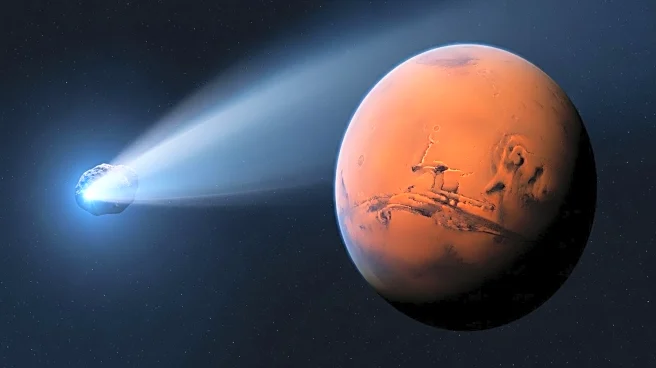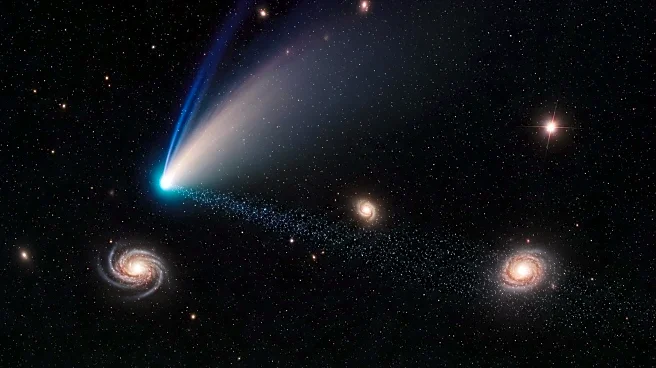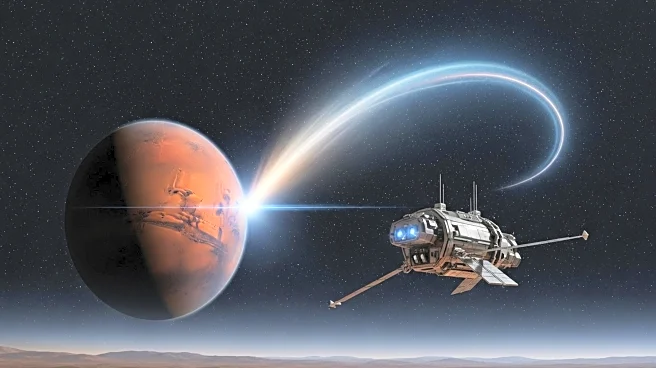What's Happening?
NASA's Hubble Space Telescope has captured images of the interstellar comet 3I/ATLAS, which is leaking water at an extraordinary rate. This comet, only the third known object from another star system observed in our solar system, is losing water at approximately 40 kilograms per second. The study, published in the Astrophysical Journal Letters, reveals that the comet's activity may be driven by icy debris around it, rather than its solid surface. Observations from NASA's Swift telescope detected the faint ultraviolet glow of hydroxyl, a product of water molecules broken apart by sunlight, indicating significant water vapor release. This discovery allows astronomers to compare 3I/ATLAS with native solar system comets, offering insights into the chemistry of distant planetary systems.
Why It's Important?
The detection of water in interstellar comet 3I/ATLAS is significant as it suggests that the ingredients for life's chemistry are not unique to our solar system. This finding provides a rare opportunity to study the chemical composition of comets from other star systems, potentially offering insights into the formation of planets and comets around stars. The comet's high water loss rate, compared to typical solar system comets, challenges existing theories and may lead to new understandings of cometary activity and planetary system formation. This research could have implications for astrobiology and the search for life beyond Earth.
What's Next?
The European Space Agency plans to continue monitoring 3I/ATLAS as it approaches the sun, with the Jupiter Icy Moons Explorer (JUICE) set to observe the comet during its most active phase. These observations could provide further insights into the comet's behavior and composition. The ongoing study of interstellar comets like 3I/ATLAS may lead to advancements in understanding the diversity and characteristics of comets from different star systems, potentially influencing future space exploration missions and research.
Beyond the Headlines
The study of interstellar comet 3I/ATLAS highlights the broader implications for understanding the universe's diversity. Each interstellar comet observed has presented unique characteristics, challenging preconceived notions about comet formation and activity. This research underscores the importance of continued exploration and observation to unravel the mysteries of planetary systems beyond our own, contributing to the broader field of astronomy and cosmology.

